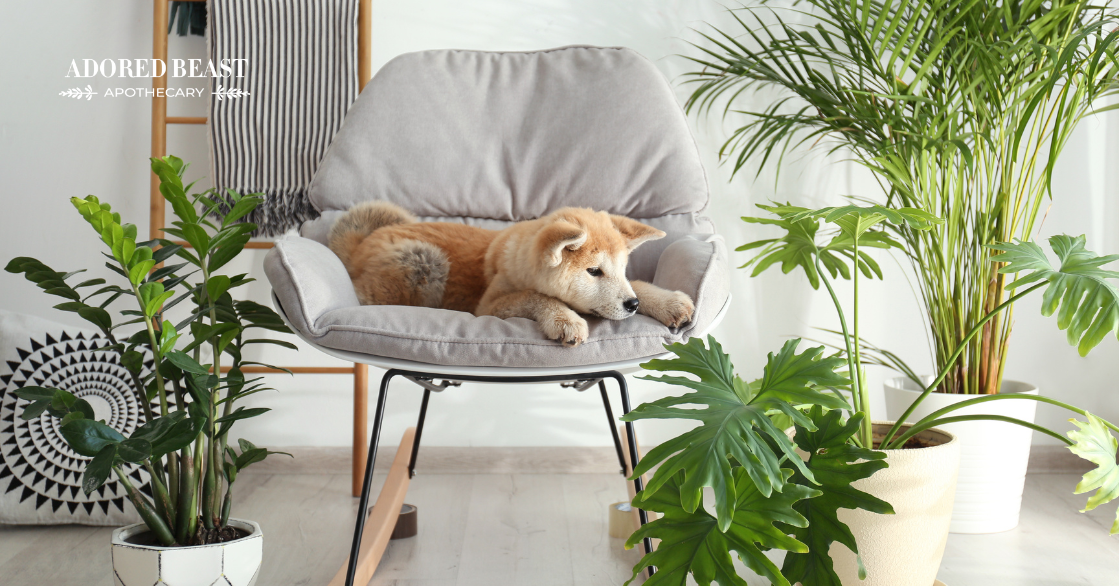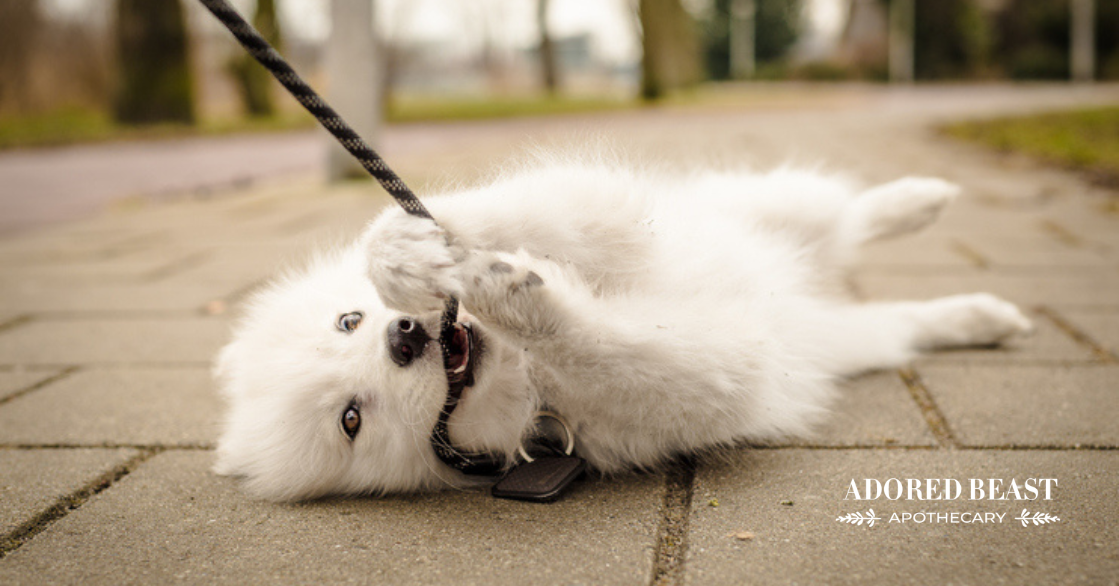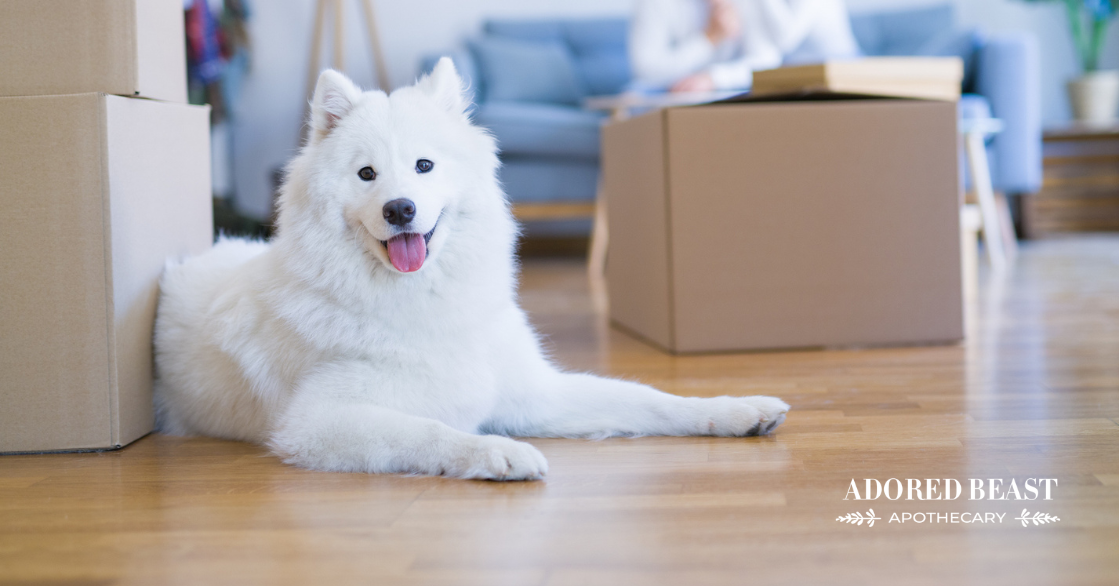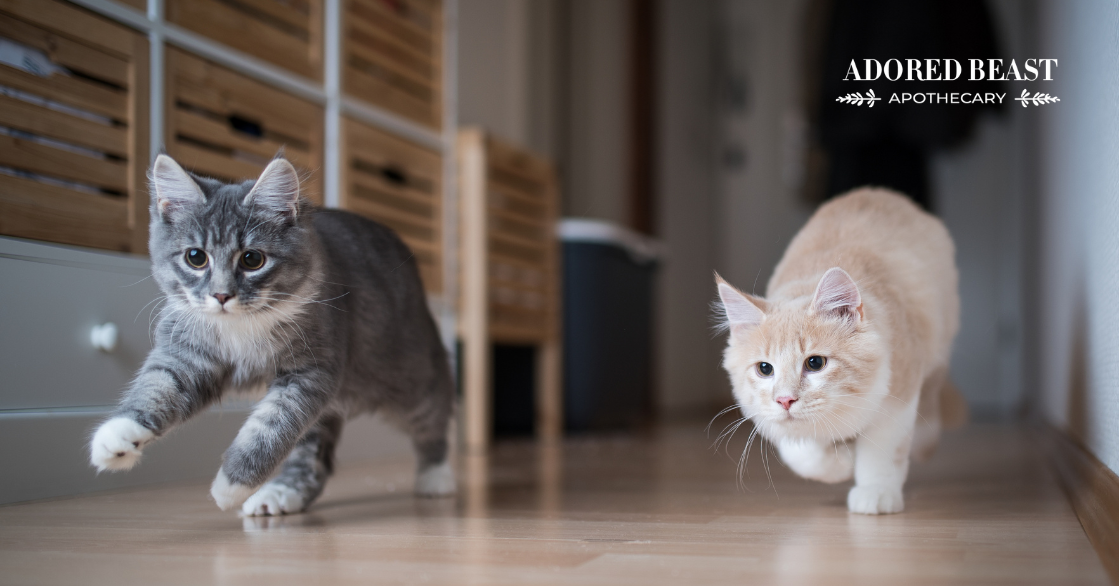Back in 1989, NASA did a clean air study looking at the best air purifying plants out there. The goal was to research ways to clean the air in sealed environments like space stations.
What they discovered is that, in addition to absorbing carbon dioxide and releasing oxygen through photosynthesis, certain common indoor plants may also provide a natural way of removing volatile organic pollutants from the air.
And since these volatile organic pollutants threaten the health of ourselves and our animals, that’s a pretty big deal!
Many houseplants help to purify the air and can even be used for natural healing. But of course, there are also those that can be toxic to our animals…
In this post, we’re running through safe houseplants for pets, plus giving you a list of ones to avoid. And of course we’ll be sure to let you know which ones are NASA approved!
Safe Houseplants for Pets
Whether you just keep one in the living room, or have them all over the house, there are many safe houseplants for pets.
NASA-approved Plants
- Areca Palm – The areca palm was NASA’s #1 plant for air purification. It filters xylene and formaldehyde out of the air, but it also acts as a really powerful natural humidifier. Take good care of these plants; water them regularly and repot them every few years to give them fresh soil.
- Parlour Palm – The parlour palm is a low-maintenance plant that grows best in bright, indirect light, but also tolerates low light. It can get as tall as 8 feet, but 4 feet is more typical. If you’re looking for some height, this one’s a good choice.
- Baby Rubber Plant – Want something a little smaller? The baby rubber plant is a good choice. It likes indirect sunlight and needs only minimal watering. Note: just be careful – some rubber tree plants (such as Japanese/Chinese/jade rubber plant and Indian rubber plant) are toxic to cats and dogs.
- Boston Fern – The Boston fern likes indirect light, evenly moist soil, and high humidity. It’s important to note, though, that not all ferns are safe. Other ferns, like the maidenhead fern, bird’s-nest fern, and staghorn fern, are safe for pets, but some, like the asparagus fern (actually part of the lily family), are a no-go!
- Spider Plant – Don’t let the name scare you; these lush green plants are lovely to look at. And as far as air purification, they pack a powerful punch against formaldehyde and xylene. They’re well known as easy-to-care-for plants. They need a little water, some indirect sunlight, and some well-drained soil.
- Gerber Daisy – Green is gorgeous, but sometimes a little colour is nice too! The daisy is an easy flower to go with. It needs some sunlight, moderate temps, and moist soil, and the flowers will bloom for up to 6 weeks.
Other Safe Houseplants for Pets
- African Violet – Another one with some colour, the African violet is a beautiful choice when it comes to safe houseplants for pets! It likes low light and moist soil.
- Prayer Plant – This striped leafy green is perfect for small spaces like bookshelves and end tables. Its red, cream, and green leaves curl up at night, giving it its name. It’s also really easy to take care of, growing best in medium or low light, and you can even let the soil dry out a bit between waterings.
- Cast Iron Plant – Also known as the barrow plant, this one is hardy and nice to look at. It doesn’t mind low light, humidity, irregular watering, and even fluctuations in temperature.
- Haworthia – This easy-to-maintain plant is actually a succulent!. It looks similar to the aloe vera plant.
- Friendship Plant – Named because it’s easy to split and share, the friendship plant tolerates medium and low light, loves humidity, and usually doesn’t grow taller than 12 inches. If you like terrariums, this is a good option.
- Money Tree – A common housewarming gift, this plant is said to bring luck and fortune to the owner. But it also brings powerful air purifying qualities. Keep this little tree to clear out benzene, formaldehyde, and trichloroethylene.
Unsafe Houseplants
As mentioned, some houseplants are toxic to pets and need to be avoided. Ingesting, or even simply touching, these plants can cause symptoms ranging from diarrhea and vomiting to seizures, difficulty breathing and organ failure.
The most common toxic plants include:
- Lilies – especially toxic to cats
- Autumn crocus
- Azalea
- Cyclamen
- Daffodils
- Dieffenbachia
- Hyacinth
- Kalanchoe
- Lily of the valley
- Oleander
- Sago palm
- Tulips
- Asparagus fern
[RELATED] Those toxic houseplants aren’t the only hidden dangers in the home.
When it comes to safe houseplants for pets, there are many out there that can brighten up your home and clear the air at the same time. The safe ones listed above can be nurtured without worry for your pet’s health. Breathe easy friends!












![[RESEARCH] Is Herbicide Safe for Dogs?](https://blog.adoredbeast.com/wp-content/uploads/2025/06/herbicides-safe-for-dogs-103x55.png)